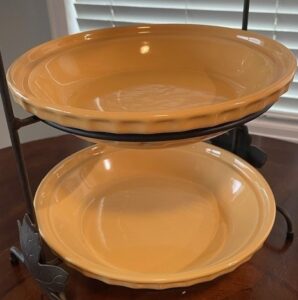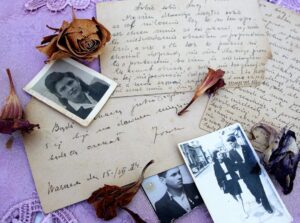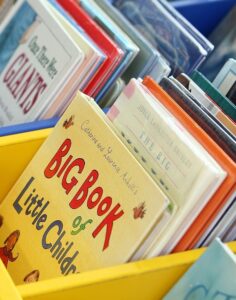 Have you ever thought about who will get your Grandma’s Yellow Pie Plate or other family heirlooms? Or have you ever thought about which books from grandma’s collection might be special to your children?
Have you ever thought about who will get your Grandma’s Yellow Pie Plate or other family heirlooms? Or have you ever thought about which books from grandma’s collection might be special to your children?
Estate Planning
 The passing on of personal family heirlooms is one aspect of estate planning that is commonly overlooked. Grandparents can often be surprised by what has meaning for their children or grandchildren if they have never talked about it. It is important to have discussions with family members about what items are special to them. Some items have family stories, while others have sentimental value beyond monetary value. These valued items can be distributed either before or after the death of a family member.
The passing on of personal family heirlooms is one aspect of estate planning that is commonly overlooked. Grandparents can often be surprised by what has meaning for their children or grandchildren if they have never talked about it. It is important to have discussions with family members about what items are special to them. Some items have family stories, while others have sentimental value beyond monetary value. These valued items can be distributed either before or after the death of a family member.
Many times, grandparents may choose to pass heirlooms on while they can still enjoy giving those items to the next generation. Others may create a list of items and use a personal property memorandum attached to the will. There are many ways to deal with personal property and each way has advantages and disadvantages. What is most important is establishing and honoring the goals the family member. When getting the process started, decide what is fair and establish a plan for handling conflict.
What is Fair?
 What is fair is often viewed differently when passing on the heirlooms. This can lead to conflict if there isn’t communication and it is important to make sure there is a clear process. Fair could mean the same monetary amount going to each person. Or it could mean each person getting the same opportunity to select items they want. But it doesn’t always mean equal. However, people are much more likely to be accepting of an outcome if they feel like the process is fair and their voice has been heard.
What is fair is often viewed differently when passing on the heirlooms. This can lead to conflict if there isn’t communication and it is important to make sure there is a clear process. Fair could mean the same monetary amount going to each person. Or it could mean each person getting the same opportunity to select items they want. But it doesn’t always mean equal. However, people are much more likely to be accepting of an outcome if they feel like the process is fair and their voice has been heard.
Some Options for Distributing Items
- Will: A will lists the distribution of personal property.
- Gifts: Gifts go back to the gift giver. This is a rule that can feel fair as long as it is clear who gave the gift.
- Labeling Items: Use painter’s tape to label large items with names of family members.
- Dice or Drawing: Use dice or drawing straws or cards to determine the order of letting people choose items that they want. Follow that order, then go backwards. Then you could roll dice again to establish a new order.
- Auction: It can be overwhelming to manage all of the personal items a person has. Having an auction can be a practical way to handle getting rid of all of the stuff. Public auctions are an option or you could have a private or silent auction where family members bid on what they want. You could also have the auction and then split the money evenly.
- Monopoly Money: If family members don’t have the same financial resources to be able to buy things, you can make things fair by giving each person the same amount of monopoly money to “purchase items” they want.
- Throw away: Not everything will have value.
What can you do when more than one person wants the same item?
- Trading Items: If more than one family member wants a special item, they could agree to trade it back and forth allowing one to have it for a year, and then trading it every Christmas.
- Buying another Special Item: If the item is available for purchase, you could purchase the same children’s book so more than one person can have the special item.
- Division: Each person could get to pick a certain number of special items and take turns. Even if they don’t get everything they wanted, each person has the same opportunity to pick and they each get some items that were special to them.
A way to start
The University of Minnesota has a resource video on Who Gets Grandma’s Yellow Pie Plate to take you through this process. Another way to organize is to provide a letter of last instruction to your family with all the facts about finances and money management. Remember to provide family members with websites, names and passwords for those digital accounts.

